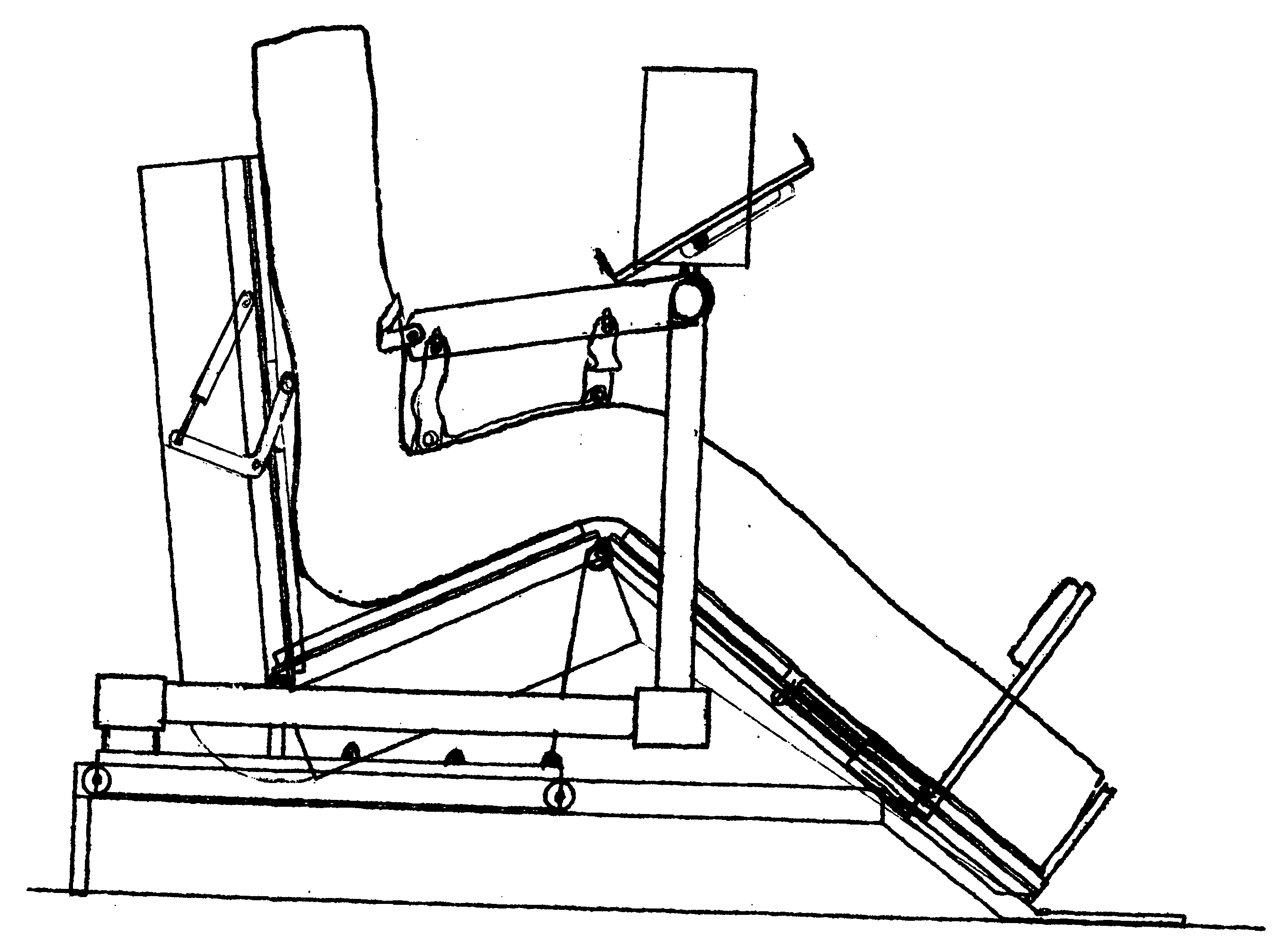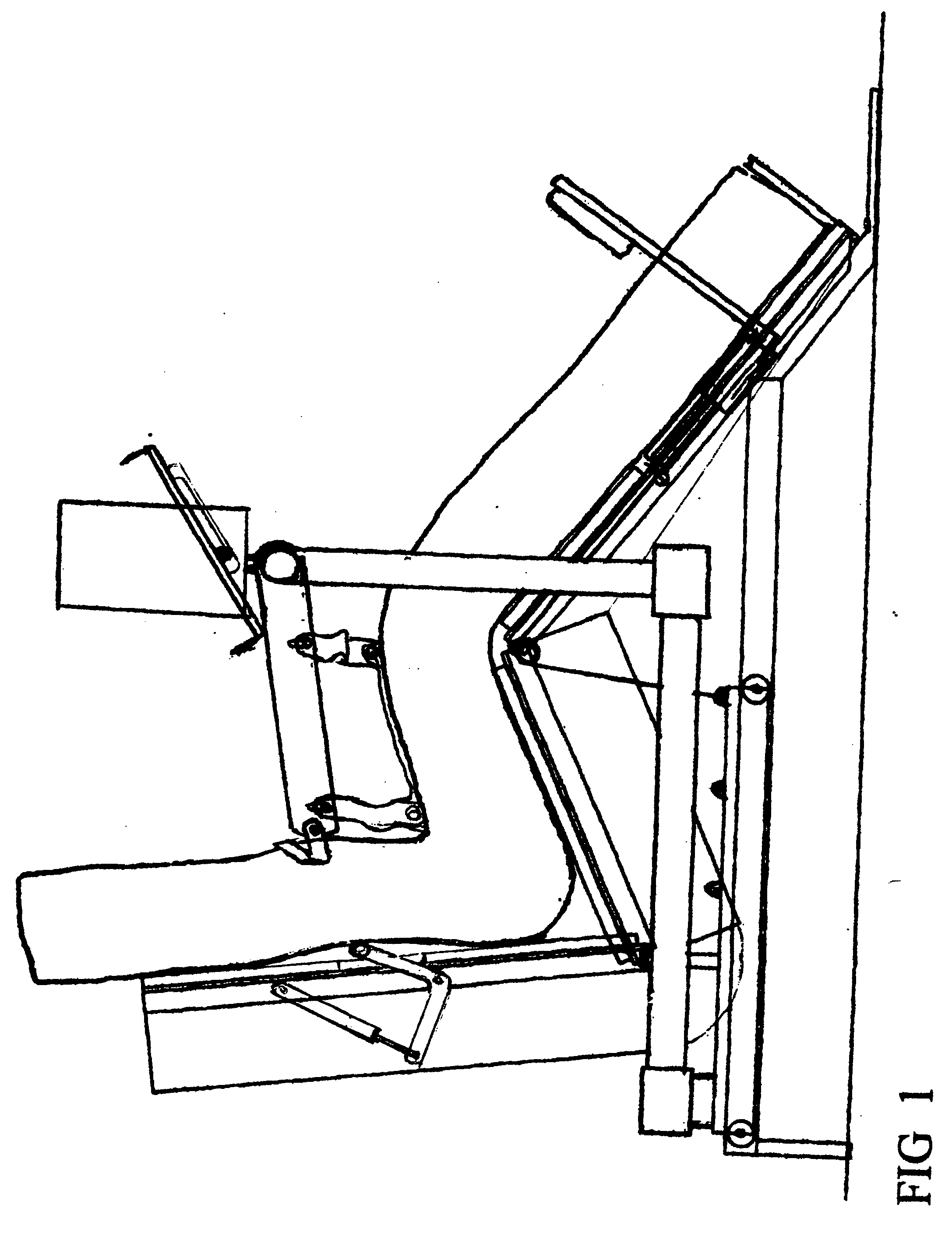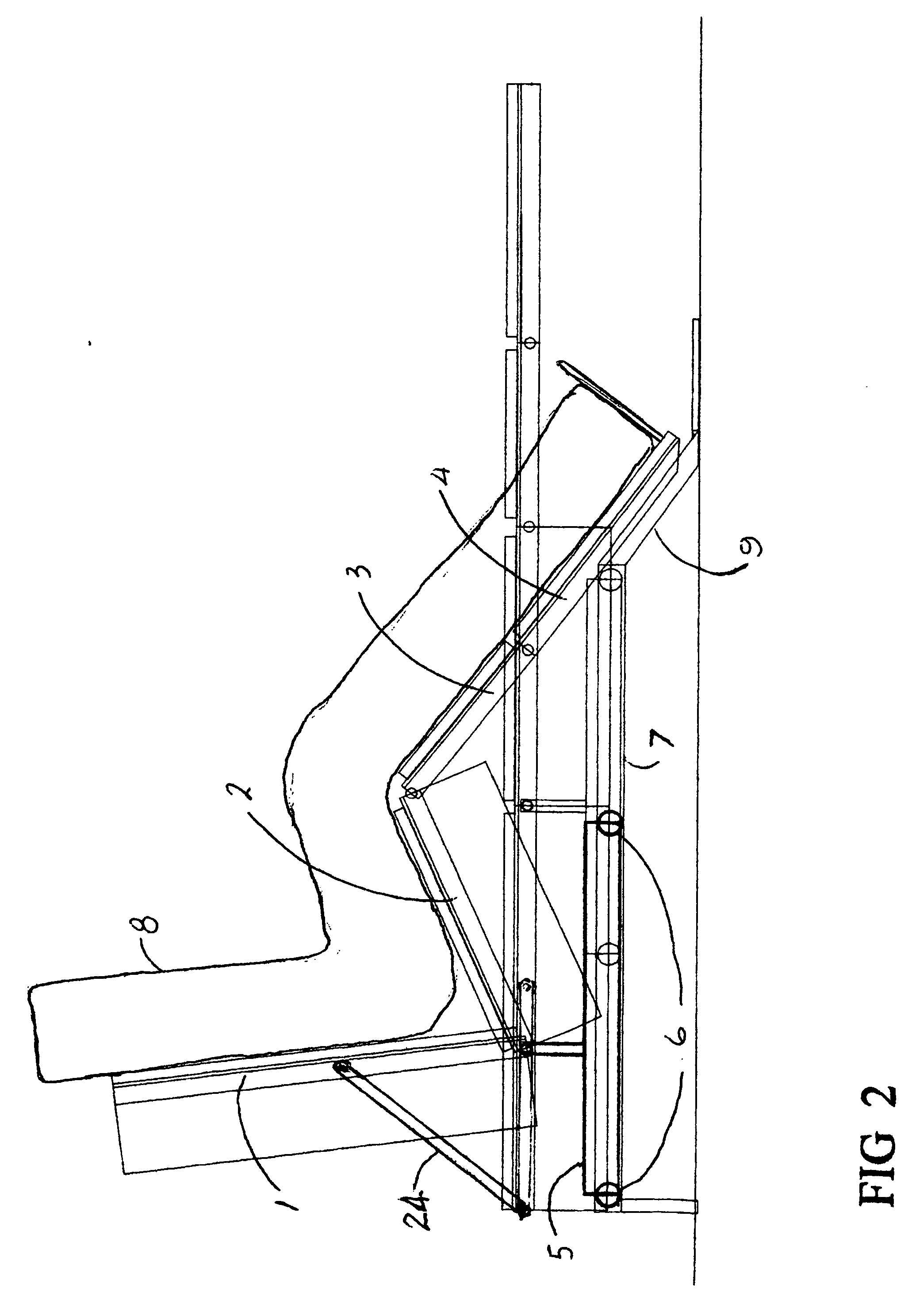Multi-position reclining bed with desk
a multi-position, reclining bed technology, applied in the direction of bed-tables, seating furniture, rigid tables, etc., can solve the problems of reclining beds having the long-felt but unrealized disadvantage of ergonomic discomfort, thighs being slightly shifted, and feet being pushed upward and shifting leg weight onto the knees
- Summary
- Abstract
- Description
- Claims
- Application Information
AI Technical Summary
Benefits of technology
Problems solved by technology
Method used
Image
Examples
Embodiment Construction
FIG. 1—A preferred embodiment of the present invention of the reclining bed with desk shows the main features of the bed in terms of it's ergonomic advantages that transform the reclining wall hugger be into long term sit-up position equivalent to and exceeding the ergonomic attributes of a comfortable chair, further warranting a desk for long periods of work or recreation.
FIG. 2—Shows the bed sections in the horizontal and sit-up position with the mattress 8 showing the sit up position only and the carriage 5 and carriage wheels 6 with heavier lines in the sit up sit-up location along the track 7 held by frame 9. The numbered sections of the bed are in the sit-up position, and unnumbered sections are in the horizontal position. The back section 1 is pushed up by back bar 24 as the bed moves in the head ward direction as it rotates about the pivot point between the back section 1 and buttocks section 2 while the buttocks section 2 and carriage 5 is rolled along track 7 supported by ...
PUM
 Login to View More
Login to View More Abstract
Description
Claims
Application Information
 Login to View More
Login to View More - R&D
- Intellectual Property
- Life Sciences
- Materials
- Tech Scout
- Unparalleled Data Quality
- Higher Quality Content
- 60% Fewer Hallucinations
Browse by: Latest US Patents, China's latest patents, Technical Efficacy Thesaurus, Application Domain, Technology Topic, Popular Technical Reports.
© 2025 PatSnap. All rights reserved.Legal|Privacy policy|Modern Slavery Act Transparency Statement|Sitemap|About US| Contact US: help@patsnap.com



